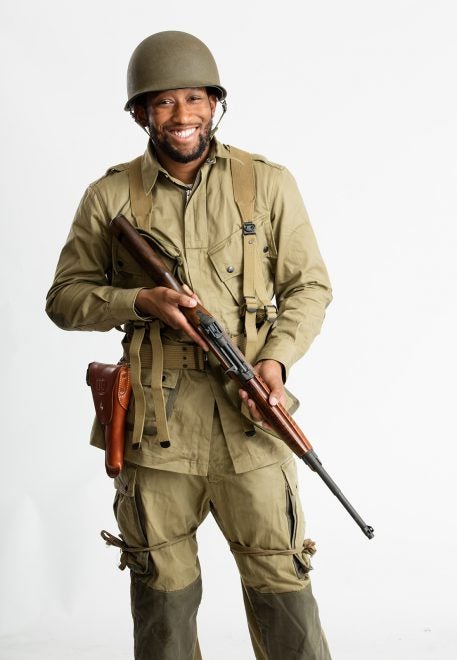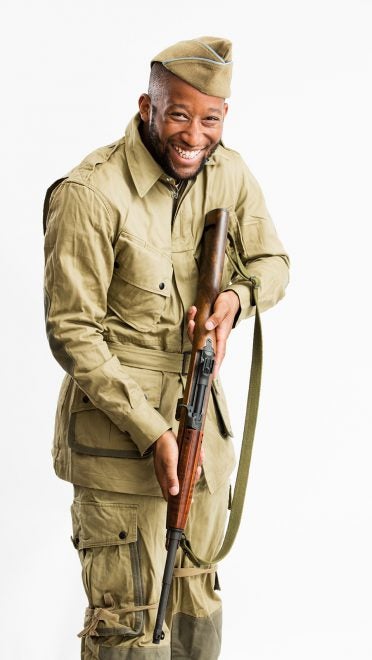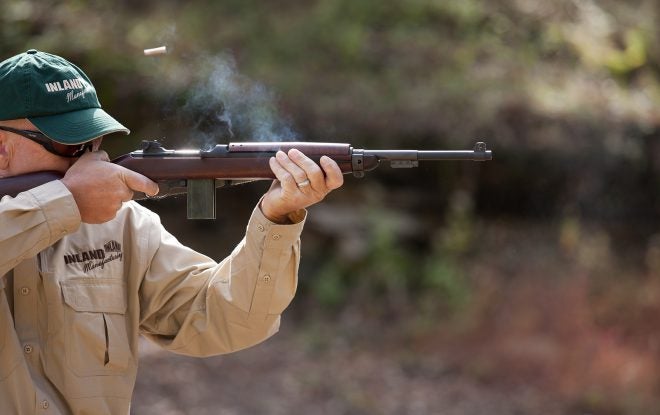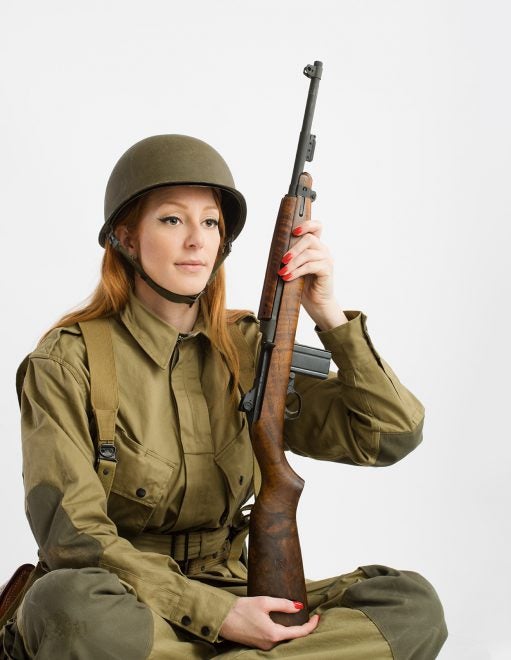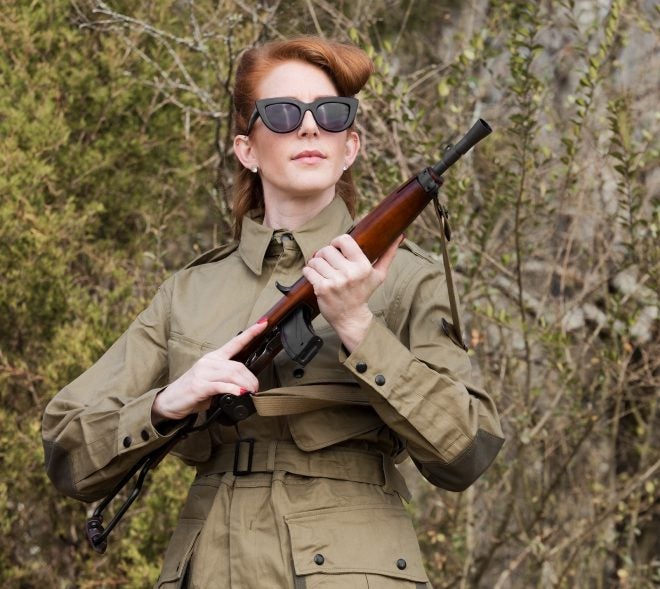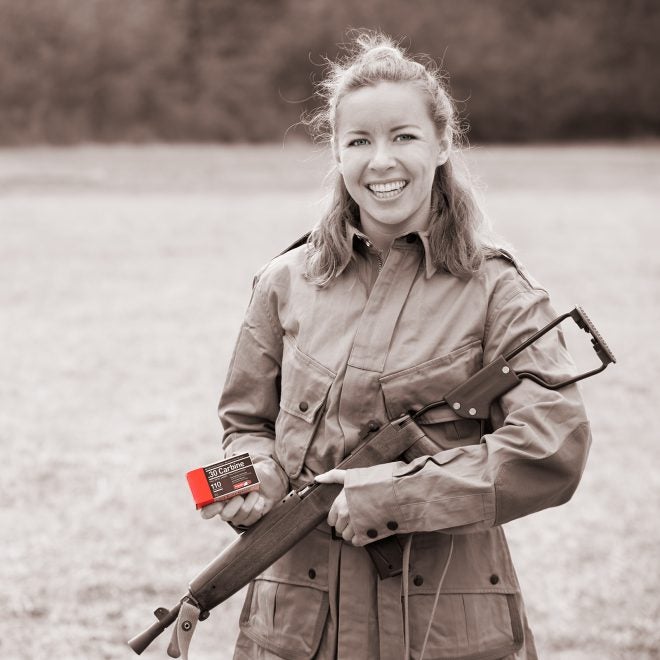Inland M1 carbines
Oleg Volk 07.26.16

While underpowered relative to M1 Garand, the M1 carbine was a significant step up from submachine guns in range and accuracy. Compared to M1 Thompson and even the later M3, it was also lighter and easier to handle. So it’s no wonder that M1 evolved into select-fire M2 and the night-capable M3 with infrared scope and searchlight. Eventually, the carbines were surplussed in large numbers and were, for decades, available at reasonable prices. More recently, as WW2 era weapons got scarce, prices have topped $1000 for well-preserved samples. A lot of the M2 guns had to be stripped for parts due to the select-fire nature of the originals. Several companies tried to make commercial M1 carbines, from Universal to IAI to Auto Ordnance, the latter being the most successful effort.
M1s have been generally popular with recreational shooters: low recoil, decent accuracy to 200 yards and light weight added up to a lot of fun at the range. With the introduction of several expanding loads, they because more practical for self-defense and hunting game like small deer. In certain circles, they are known as “the girlfriend” gun, mainly for the compact form and good balance.
Recently, Ron Norton revived Inland Manufacturing, one of the most common and well-regarded wartime brands of M1 carbines. Inland now makes a 1945 model (ladder sights, bayonet lug), 1944 model for restrictive states (no bayonet lug, 10-round magazine), “Jungle” model with a barrel threaded for a cone flash hider and other accessories, a modernized “Scout” aka “little black rifle” with a railed forend for optics, M1A1 paratrooper model with folding stock and Advisor pistol patterned after the 1960s Universal product. The fit of the parts is on par with the originals, and the finish, especially of the wood, is better.
The “Scout” model at the top of this article is shown with a 1.5-5x scope that turns a “fairly accurate” carbine into a 1MOA to 1.5MOA shooter with good ammunition. BDC markings in the scope also make shooting out to 300 yards more productive.
Advisor pistol can be used as sold or, with an NFA tax stamp and a paratrooper wire stock, turned into a very handy CQB weapon. While the barrel is only 12″ long compared to the original 18″, chronograph indicated only a minor loss of velocity. The long barrel produces 1950-2000fps or so, the short only about 100-150fps less. The sample tested was select fire made as a manufacturer’s testbed for reliability.

This short carbine proved quick and easy to control. If used with a railed forend and a red dot, it gives up no accuracy to the longer variant and only a little range. We used several types of ammunition, finding the best reliability and accuracy with Federal soft points and Aguila ball.
Good trigger and short weapons provided good enough control for a shooter new to automatic arms to make 3-4 round bursts that all hit A zone at 15 yards. Low recoil meant that everyone looked forward to getting a turn.

The main reason for M1 carbines, besides the practical uses, is the spirit of the times it represents. Along with M1 Garand and M1911A1 (also offered by Inland), M1 carbines are among the few WW2 vintage weapons available unmodified. And they are still as useful for defense as the year they were introduced.
